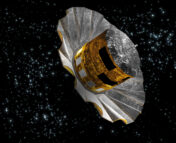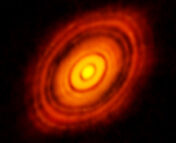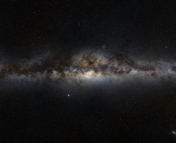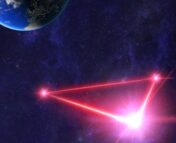Title: Orbital motion of primordial black holes crossing Solar-type stars
Authors: Vitorio A. De Lorenci, David I. Kaiser, Patrick Peter
First Author’s Institution: Instituto de Física e Química, Universidade Federal de Itajubá, Itajubá, Minas Gerais 37500-903, Brazil
Status: Preprint posted on arxiv, May 13 2024
Little in size, big in spirit
Somewhere out in the cosmos, a special kind of black hole is theorized to exist–primordial black holes (PBHs), which differ from other black holes in how they came to be. Rather than sprouting from the death of a star, they are thought to arise from extremely hot, quasi-bubbling regions of material in the very early Universe (less than a second into its lifetime!). Some of these regions were so hot and so full of material that, instead of bubbling over, they collapsed into themselves, forming PBHs. Although theoretically they could run the gamut of masses, ranging from near the Planck level to hundreds of thousands times the Solar mass, it is predicted only PBHs with a mass greater than 1012 kg (a bit more than the combined mass of every building in New York City) could survive today, as anything smaller than that would have evaporated by now.
Even though scientists haven’t determined whether they exist yet, PBHs are a tantalizing explanation for a portion of dark matter. However, just like any other type of black hole, they don’t emit light, making them hard to detect. But their smallness adds a unique twist. Some of the most massive ones we might expect to find, i.e. those with a mass rivaling that of Ceres, would be one itty bitty E. coli bacterium across, while the lightest (say, our NYC-sized one) would be a couple atomic nuclei across. If you assume PBHs make up the entirety of dark matter, then you could expect them to be widely peppered throughout the cosmos, throughout the Milky Way, and throughout every star system, including our own.
As part of astronomers’ long tradition of asking incredibly bizarre questions, here’s another one: what would happen if you shot a primordial black hole into the Sun? At first glance, this question seems to be composed entirely of words that could not, and should not, belong in the same sentence. After all, we tend to think of black holes as nature’s all-powerful vacuum cleaner (which isn’t true). It turns out that for PBHs with approximately less mass than Deimos, one of Mars’ moons, nothing much would happen until the star exits the main sequence, assuming it stays at the core the entire time.
The authors of today’s paper take it further and ask, what would happen to a primordial black hole’s motion through a Sun-like star if you launch it from both inside the star and outside?
Noclipping through a Sun-like star
Simulating every aspect of a scenario where a PBH travels through the Sun would require a complete knowledge of stellar evolution, cosmology, and particle physics we don’t (or could ever) have, so the authors must paint in broad strokes. They ignore effects from gravitational radiation, dynamical friction, hydrodynamic drag, general relativity, and differential rotation, justified since every orbit takes over two and a half hours in-simulation, too short a time for these to become important. In fact, the only physical effect comes from the sheer gravitational force of the star exerted onto the PBH when it is outside, and from what is exerted from the region of stellar mass the PBH “sees” when it is inside the star (see Figure 1). In a way, by ignoring all these other effects, it’s like the PBH turned off collision physics in its favorite video game (*cough* Skyrim) and started glitching through walls.

Dancing (in) the stars

There are 2 main types of orbits the authors found in their simulations: those that stay inside the star for the entirety of the simulation (which takes place over 11 days in-simulation), and others that eventually venture outside the star. Where the PBH ends up and whether it enters a closed or open orbit varies on initial conditions–for example, placing the PBH inside the star and setting the initial velocity to ~490 km/s results in a pretty normal-looking closed orbit where it always returns to the same position with the same momentum, seen in Figure 2. Decreasing the velocity by ~50 km/s creates an open orbit, where the PBH never returns to the same position over time and instead precesses, shown in Figure 3.
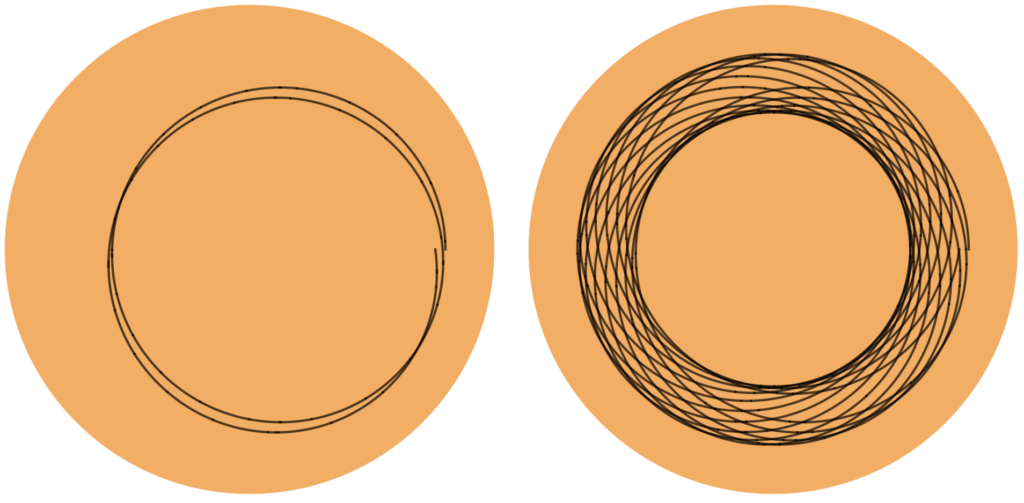
Placing the PBH initially outside the star with a starting velocity of ~70 km/s creates a three-petalled complex orbit where it periodically swings in and out of the star, seen in Figure 4. Chaotically, just decreasing its velocity by 1 km/s dooms it to never return to its initial position, forming a cascading rosette-like orbit in Figure 5.
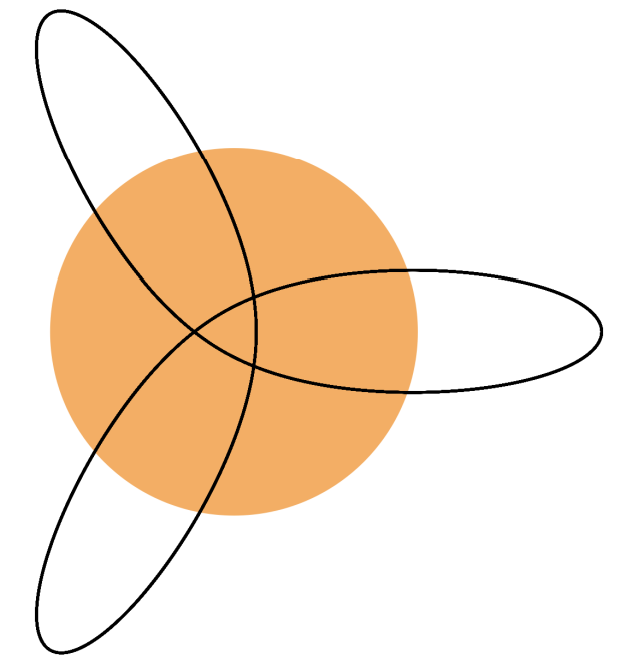

Depending on where the PBH is located relative to the star, and how mass is distributed within the star itself, PBH orbits may come in a variety of shapes. This may prove useful for understanding mechanisms behind whether they end up gravitationally bound to stars or fly past them, if any PBHs are ever found. The authors note that it is also very interesting that they gain precession effects in open orbits with the assumptions they made as they would have if they included relativistic effects.
As simple as making apple pie from scratch
Today’s authors give the caveat that this is a very simple way to look at things, especially since the timescale simulated is so short. However, they find that for Deimos-mass (and smaller) PBHs, dynamical friction becomes important after one terayear, or 1,000,000,000,000 years, longer than the age of our Universe. For Ceres-mass PBHs, dynamical friction comes into play after a mere one million years. These calculations agree with one of the papers covered by this Astrobite, which is reassuring.
In addition, while the authors assumed a varying mass-density profile for the star, they assumed it was perfectly spherical, which may not be true for all main sequence stars. This, combined with the fact that different parts of a star rotate differently, may mean the properties of a PBH-star orbit may possibly relate to its host stellar properties, namely its mass-density profile, assuming we ever observe one. What a puzzle!
Astrobite edited by Skylar Grayson
Featured image credit: Figure 8 from the paper.

